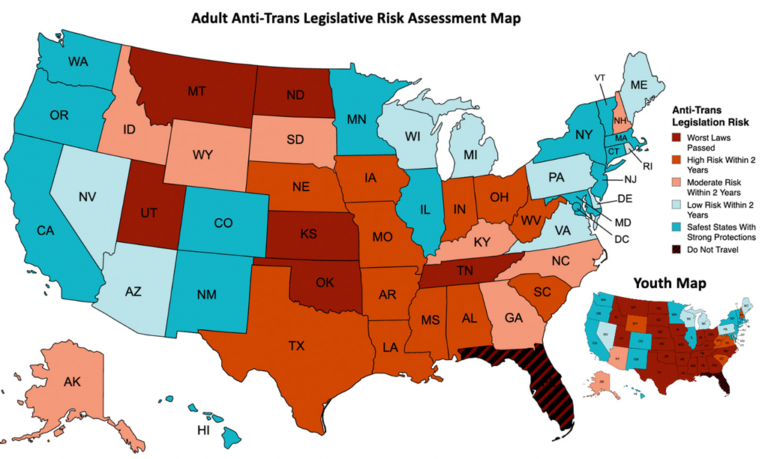Departments in Peril: How Can the Healthy Departments Committee Help?

 In many respects this should be a time of rising attention and support for geography. The concerns of the planet — global climate change, geopolitical turmoil, social and spatial justice — are those that speak to geography’s strengths. Geography scholars have been recognized with Guggenheims, MacArthurs, National Academy invitations and other honors. Geospatial technologies are standard throughout business and government, and geographers are best poised to educate geospatial practitioners and develop new technologies. We are also a STEM discipline, which puts us at a strategic advantage given the priorities of many universities these days.
In many respects this should be a time of rising attention and support for geography. The concerns of the planet — global climate change, geopolitical turmoil, social and spatial justice — are those that speak to geography’s strengths. Geography scholars have been recognized with Guggenheims, MacArthurs, National Academy invitations and other honors. Geospatial technologies are standard throughout business and government, and geographers are best poised to educate geospatial practitioners and develop new technologies. We are also a STEM discipline, which puts us at a strategic advantage given the priorities of many universities these days.
Yet, while the promise of geography is great and the demand for geography is clear, our overall institutional health is in jeopardy. Consider these two markers. First, as the State of Geography report pointed out, and as I warned in my first presidential column, there has been a steady drop in the number of geography majors throughout the United States in the last dozen years. Lower major numbers reduce overall credit hours in geography programs. Second, several geography programs in the last several years have been eliminated or severely impaired. This has happened at both smaller, teaching-oriented universities and in larger research-oriented flagships. The number of programs in peril is higher than I have seen in my professional experience and constitutes a critical problem for our field.
Those of you reading this column are aware of some of the reasons behind these trends. Most colleges and universities across the country are looking at enrollment declines and entire institutions have been forced to close. Funding support is under threat In the face of stingy state budgets and some legislators casting universities as the enemy rather than emphasizing the benefits they offer to society. Moreover, as an academic discipline within the United States, geography carries its own unique disadvantages. We cannot always count on university administrators being familiar with what we do (how many times have we been called “Geology”?). As a discovery major that most students find only after having taken a class or two, we rely on core-curriculum requirements to bring in our students.
To counter these trends, we cannot afford to rest on our impressive laurels. As I see it, if nothing is done to turn things around, we could be looking at geography becoming a niche discipline at just a few, mostly larger, universities. Several states will have no geography programs within their borders. And as access to geography programs diminishes, ever fewer people will know of its value, leading to a vicious cycle of continued decline.
Unfortunately, there are no straightforward solutions to these challenges. In past years, overall increases in the number of college and university students provided all disciplines with a boost. Merely holding our own was enough to ensure success. The high-water mark was in 2010, when there were 21 million U.S. university students. Since then, the numbers have declined by ten percent; declines that will probably accelerate with falling birth rates. When overall higher education numbers decrease, budgets are stressed, and disciplinary success requires fighting against these larger trends. In a shrinking pool of students, Geography needs to prove its value over and again.
In keeping with this need, many useful ideas have been discussed in journals and in the pages of the AAG Newsletter. A couple of years ago, Stoler and others measured the effectiveness of various terms associated with the names of courses and departments. Several academics have noted the value and promise of the AP Human Geography exam, including Moseley et al and Solem et al, and AAG presidents have weighed in on some ideas to improve departmental health, including building an environment of respect (Lave), enhancing mentorship (Alderman), building community in geography (Foote), and creating a more equitable academic culture (Kaplan).
Fortunately, the American Association of Geographers has long understood the challenges departments face and has endeavored to help. The Healthy Departments Committee (HDC) was established in 2004 as an AAG standing committee composed of well-established professors and administrators from a variety of institutions. The HDC was intended originally to act on any requests from departments or programs threatened with closure. It was also meant as a resource for departments looking for external reviewers or any other form of assistance. Under the able direction of first Vicki Lawson and then Alec Murphy, the HDC has written dozens of supportive letters to university decision-makers. The HDC also initiated workshops for department heads, developed a set of materials for departments to utilize in their own promotion, and facilitated the launch of a department heads’ listserv.
These activities continue to this day, but we need to find ways for the HDC to become more proactive in anticipating the threats that departments face. It is always frustrating to discover that a program is slated for closure in a matter of just days or a few weeks, with no time to turn things around. In some unfortunate instances, closures have been announced out of the blue, but more often there have been warning signs, often in the face of low enrollments and a smaller major pool. As unfair as it might be, administrators will seize on these metrics to justify their actions. A program with large numbers of students and with a dedicated base of alumni, is much, much harder to cut.
The HDC can only be effective if geographers know who we are and what we can do. We are available to brainstorm ways to enhance the resilience of your programs, including course changes, curricular design, expanding outreach to potential students, and working more effectively with administrators. Sometimes a few tweaks early on can make a difference. Certainly, it makes sense for all programs to think carefully about their strengths and weaknesses and consider how these align with institutional guidelines.
In order to get a more granular look at geography programs in the United States, the HDC has been working with the AAG to expand its data collection on matters of relevance to departmental health. Look for a survey to be distributed to all program heads in April which will provide measures of departmental health. Strong participation will greatly improve the ability of the HDC to respond to departments facing significant challenges. We will identify those activities that the AAG can perform on behalf of departments, such as creating more relevant promotional materials and providing help for at-risk departments.
In the lead-up to the release of the AAG Survey and the Annual Meeting in Honolulu, we will be providing more information on the state of Geography and what the Healthy Departments Committee can do. Moving forward, we urge those of you who work in colleges and universities to reflect on your own programs and possible ways to build a more robust, healthier department.
I would be delighted to speak with you further about this. Please reach out at dkaplan@kent.edu.


